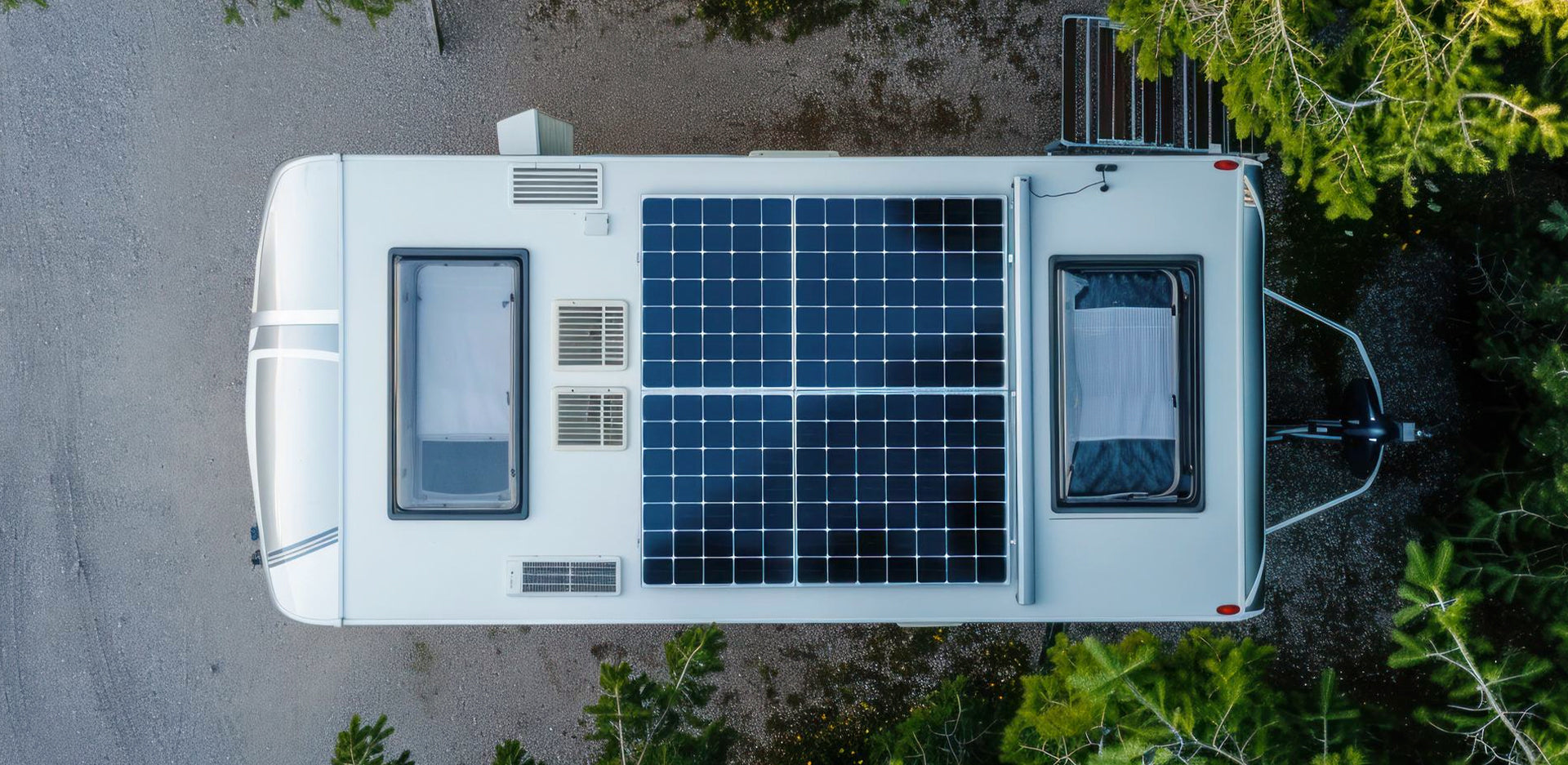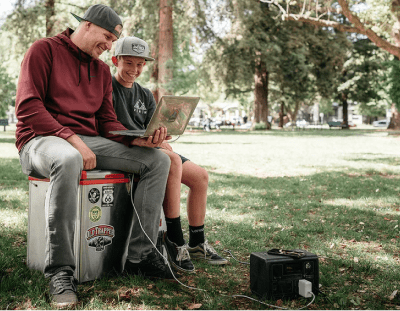The freedom of off-grid travel has never been more appealing, with thousands of Australians choosing to explore the country's vast landscapes without the constraints of powered campsites. With the right solar setup, you can leave crowded caravan parks behind for good and venture into remote locations whilst maintaining all the comforts of home. This comprehensive guide on how to select solar panels for caravans will walk you through everything from understanding your power needs to choosing the perfect panel type, ensuring you make a confident choice for your adventures. We'll cover essential considerations, including power consumption calculations, different panel types, and the vital components that complete your off-grid solar setup, helping you harness the Australian sun to power your caravan lifestyle.
Understanding Your Caravan Power Needs First
Before browsing solar panels for caravans, the crucial first step is understanding your energy consumption patterns to avoid overspending on unnecessary equipment or finding yourself without power in the middle of nowhere. Start by conducting a simple power audit: list all your 12V appliances, such as your fridge, LED lights, water pump, fans, and television, along with any electronics you regularly charge like phones, laptops, and tablets. Create a straightforward calculation for each item by multiplying the appliance wattage by the hours of use per day to determine your daily watt-hours, then convert this total into amp-hours by dividing by 12 (for a 12V system).
For example, if your LED lights draw 10 watts and run for 5 hours daily, that's 50 watt-hours or roughly 4.2 amp-hours. Repeat this for every device to establish your total daily power consumption. This power audit becomes your foundation for sizing both your battery bank and solar array, ensuring you select a system that matches your actual needs rather than guessing and potentially coming up short during cloudy weather or extended stays off-grid.
A Simple Guide to Caravan Solar Panel Types
Understanding the three main categories of solar panels suitable for caravans helps you make an informed choice based on your specific budget, available roof space, and travel style, with each type offering distinct advantages for different camping scenarios.
Rigid Solar Panels
Traditional fixed panels with aluminium frames and tempered glass tops remain the most popular choice for permanent caravan installations, offering the highest efficiency rates (particularly monocrystalline models at 20-22% efficiency), exceptional durability with lifespans often exceeding 25 years, and the most cost-effective price per watt. While they're heavier than alternatives and require drilling for mounting brackets, their superior performance in all weather conditions and proven reliability make them ideal for full-time travellers who prioritise maximum power generation from their available roof space.
Flexible Solar Panels
These lightweight, thin panels can bend up to 30 degrees to fit curved caravan roofs, offering a discreet appearance with easy installation using high-strength adhesive that eliminates drilling requirements and adds minimal weight to your vehicle's payload. Modern high-quality flexible panels from Outbax, such as their 100W and 300W models, now rival rigid panels in efficiency while providing the added benefits of being walkable (check manufacturer specifications), resistant to vibration damage on corrugated roads, and perfect for vintage caravans where maintaining aesthetics is important.
Here’s what one of our customers said:
“I have installed panel to the roof of my golf cart. The roof is convex so the flex of the panel is necessary. Panel puts out good power to keep the cart running. Very happy with purchase.”
Portable Solar Panels and Blankets
Folding solar panel kits and solar blankets like Outbax's 200W portable options provide unmatched versatility, allowing you to position them in full sun whilst your caravan rests in the shade, maximising power generation throughout the day. Their portability means they serve multiple purposes beyond caravan use – powering camping fridges at remote picnic spots, providing backup power at home during outages, or supplementing a rooftop system during winter months when sun angles are less favourable, making them perfect for occasional travellers or those preferring non-permanent installations.
Here’s what one of our customers said:
“I purchased a VoltX Solar folding blanket to compliment the solar on my caravan. Have tried it once and it works really well.”
Key Factors for Choosing the Right Solar Panels
After determining your preferred panel type, use this practical checklist to narrow down your options and ensure your selection meets both your power requirements and budget constraints.
Power Output and Wattage
The relationship between panel wattage and actual power generation depends on various factors, including sunlight hours, weather conditions, and seasonal variations. A 200W panel will theoretically produce twice the power of a 100W panel under identical conditions, but real-world performance varies. Match your total solar wattage to exceed your daily power needs by approximately 20-30% to account for cloudy days, panel degradation over time, and system inefficiencies, ensuring that if your power audit shows 100Ah daily consumption, you'll want panels capable of generating 120-130Ah under average conditions.
Panel Efficiency and Technology
Monocrystalline panels, identifiable by their uniform dark appearance, offer superior efficiency (18-22%) compared to polycrystalline alternatives (15-17%), making them the preferred choice for caravans where roof space is limited and every square metre counts. Their better performance in low-light conditions during dawn and dusk, plus superior heat tolerance during scorching Australian summers, means monocrystalline technology from quality suppliers like Outbax delivers more consistent power throughout the day and across different seasons.
Durability and Weather Resistance
Australian conditions demand panels built to withstand everything from corrugated outback tracks to salt-laden coastal air, making durability features essential for long-term reliability and performance. Look for rigid panels with robust aluminium frames and junction boxes rated IP65 or higher. Flexible panels, on the other hand, should feature durable ETFE coating that resists scratches, UV degradation, and moisture ingress – these specifications ensure your investment survives decades of adventure.
Cost and Budget
Quality solar panels for caravans typically range from $150-$250 for a good 160W fixed panel, while portable solar blankets might cost $300-$500, representing a significant upfront investment that pays dividends through eliminated powered site fees (often $40-$50 per night) and reduced generator fuel costs. When shopping at Outbax, consider the long-term value proposition: a $1,000 solar setup could save you thousands annually if you regularly camp off-grid, making it a wise investment that enhances both your travel freedom and your hip pocket over time.
Building Your Complete Caravan Solar System
Solar panels represent just one component of a functional off-grid power system, with several other essential elements required to safely store and utilise the energy you harvest from the sun.
The Right Charge Controller
Acting as the guardian between your panels and battery, the charge controller prevents overcharging that could damage expensive batteries whilst optimising power transfer efficiency. MPPT (Maximum Power Point Tracking) controllers, though pricier than PWM alternatives, deliver up to 30% more charging efficiency, especially during cloudy conditions or when panels heat up, making them the superior choice for serious caravaners who need reliable power in all conditions. Outbax stocks quality MPPT controllers sized appropriately for various panel configurations.
The Best Battery for Your Needs
Your battery bank stores solar energy for use when the sun isn't shining, with two main deep cycle options dominating the caravan market: traditional AGM (Absorbent Glass Mat) and modern Lithium Iron Phosphate (LiFePO4) batteries. LiFePO4 batteries like those available from Outbax offer compelling advantages, including 50% less weight, 5-10 times longer lifespan, deeper discharge capability (80-90% versus 50% for AGM), and faster charging rates, making them the premium choice for full-time travellers despite higher initial costs, while AGM batteries remain a reliable budget-friendly option for occasional weekend adventures.
Inverters for 240V Power
If you need to run standard household appliances like coffee machines, microwaves, or certain laptop chargers requiring 240V AC power, a quality inverter becomes essential for converting your stored 12V DC battery power. Pure Sine Wave inverters, though more expensive than Modified Sine Wave alternatives, provide clean power that won't damage sensitive electronics or cause interference with televisions and radios, making them the recommended choice for most caravan setups.
Final Thoughts on Your Off-Grid Power Setup
Selecting the right solar panels for caravans involves three key steps: conducting a thorough power audit to understand your actual energy needs, choosing the appropriate panel type that matches your budget and installation preferences, and selecting quality components like MPPT controllers and suitable batteries to complete your system. Investing in a well-designed solar setup from trusted suppliers like Outbax unlocks genuine freedom and independence on the road, allowing you to explore Australia's most remote and beautiful locations without sacrificing modern comforts. Start planning your perfect solar system today by browsing the comprehensive range of panels, batteries, and accessories designed specifically for the unique demands of caravan life.


